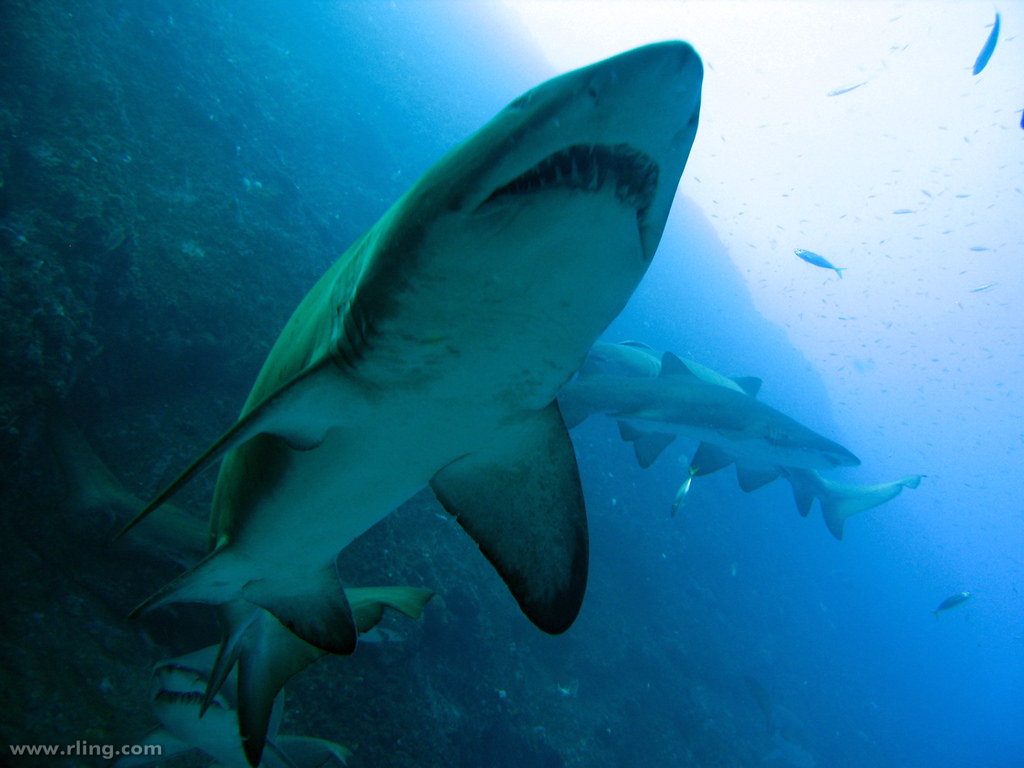Sharks have been the most wild and most feared creature of the ocean ecosystem. It is very difficult to set an average for sharks’ life period as a whole because each species has its own expected survival rate. Approximately, most of the sharks live for 20 to 30 years. In this article, we take a look at different stages of their life cycle.

Stages of Sharks’ Life Cycle
The life cycle of sharks is based on 5 different phases including fertilisation, incubation, birth, growing period and adulthood. Let’s move on to study them in detail.
Phase 1 – Mating
Mating is the first stage in the life cycle of sharks, female sharks produce pheromones to attract males, male sharks approach female sharks and often bite her to express their intention to mate. Mating among sharks has been rarely observed by researchers and is a somewhat indefinable thing amongst them.
Phase 2 – Fertilisation
After the completion of the mating phase, internal fertilisation of the eggs occur. A pair of appendages called claspers is located on the pelvic fins of male sharks which help in the transfer of sperm into the female body from the opening called cloaca located on the underside of the female’s body.
Phase 3 – Incubation and Gestation
After the fertilisation stage, the next phase is incubation and gestation period. Sharks give birth to their young pups in three different modes of reproduction.
i: Oviparous mode
It is the type of reproduction in which sharks give birth to their offspring by laying eggs; the eggs are protected by a leathery egg shell. About 25% of sharks undergo this mode of reproduction.
ii: Viviparous mode
This method of reproduction describes the birth of baby sharks that live inside the body of the mother, the placenta provides them with nourishment so that they become fully developed and born in the sea after the completion of their gestation period.
iii: Ovoviviparous mode
The sharks of this category reproduce both by laying eggs or giving birth to pups. Most of the sharks lay eggs inside their body, the eggs hatched internally and the young are born alive once they become fully developed. However, the gestation period of ovoviviparous sharks is not exactly known but it was thought to be from several months to over 2 years may be!
iv: Asexual reproduction
Some shark species also reproduce by asexual method in which females sharks are not dependent upon the input of male and manage to conceive without mating. The cases of asexual reproduction in wild are still not known but it is believed to be the last option to adapt in the absence of male sharks.
Phase 4 – Birth of sharks pups
Now the next stage is giving birth to the young pups, but mother sharks like other animals do not care about their pups after birth, as soon as the young are released in the water they care for themselves and swim away from their mother. The number of offspring varies from species to species; some sharks give birth to 100 pups on the spot whereas others may give birth to 2 or 4 young ones but all offspring are born alive and are fully developed.
Phase 5 – Growing period
The next stage is the growing phase in the life cycle of sharks, many shark pups remain in the close vicinity of their birth place until they enter the adulthood phase. However, many sharks were born in coastal areas but most of them die due to the impact of humans on their habitat.
Phase 6 – Adulthood stage
It took 15 years of shark’s life to reach the adult stage, the growth of sharks proceed at a very slow rate so many of them die before they enter adulthood. But once they become adults, they are capable of reproduction. The reproduction methods are not the same; it varies from species to species. On an average, the lifespan of sharks is about 20 to years but some sharks like Spiny Dogfish can live for centuries as well.
Final words
The life cycle of sharks revolves around 6 different stages starting from mating to fertilisation, incubation, giving birth to young ones and finally entering adulthood. During their life cycle they also had to face a lot of difficulties such as habitat change, temperature fluctuation, sometimes unavailability of food, but as sharks are considered as the king of the ocean so they were able to manage and overcome these harsh environmental conditions during their reproductive period.
